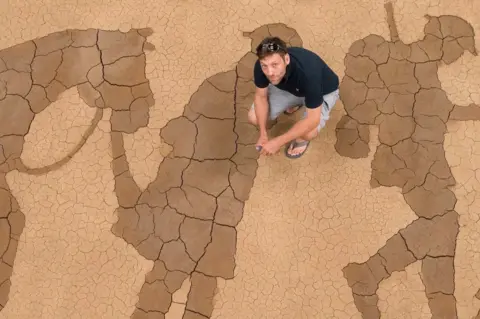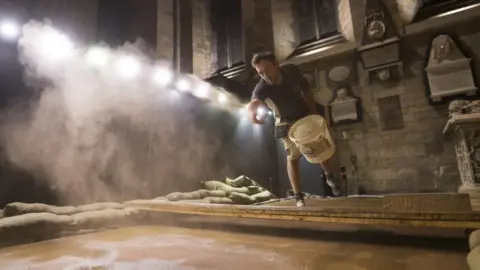Ripon Cathedral's World War One mud memorial unveiled
 Joseph Priestley
Joseph PriestleyA memorial made from mud has been unveiled at Ripon Cathedral to mark the centenary of the end of World War One.
The installation is made from wet soil, which - as it dries out - reveals silhouettes of five battle-weary soldiers returning from the home front.
Mud from Passchendaele in Flanders and earth taken from a World War One military camp in Ripon have been used to create the nine-metre long artwork.
Titled 'Fields of Mud, Seeds of Hope', it is on display until 14 November.
Artist Dan Metcalfe said: "We have used mud - something very familiar to so many World War One soldiers and deeply symbolic of struggle and sacrifice - and sought to form it into an artwork that looks to the future and has hope at its core.
"Over a few weeks the moisture evaporates from the mud and cracks begin to appear, which form the silhouette of a troop of personnel returning from the front."
 Joseph Priestley
Joseph PriestleyMr Metcalfe said portions of the combined earth mix, which also contains dormant poppy seeds, would be made available to the public after the sculpture is decommissioned.
Millions passed through the Ripon military hospital camp during the war including poet Wilfred Owen and author J.B. Priestley.
The sculpture is part of a programme of events at the cathedral, which includes a light display, choral performances and a walk to commemorate Owen's death.
The trail covers a route from the city to the camp at Hell Wath, where Owen was stationed while he recovered from shell shock, and includes the house in Borrage Lane where the poet rented an attic room and wrote some of his most celebrated works.
